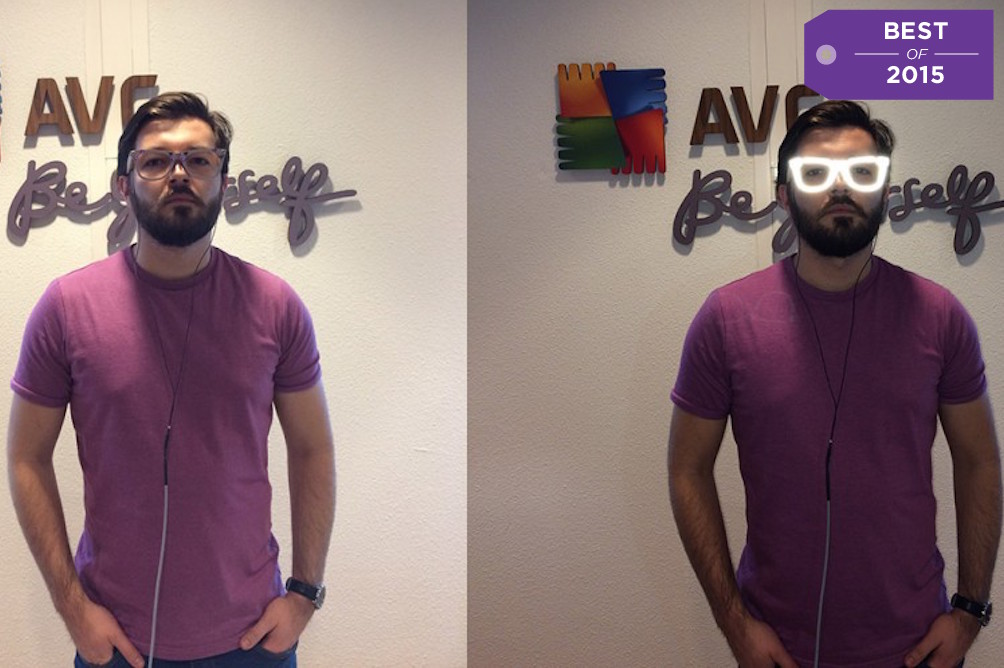
AVG reveals eyewear to protect your identity from facial recognition programs
PSFK counts down our 10 most popular posts of 2015. The Best of 2015, above all else, illustrate lessons that other innovators, thinkers, and change-makers can pull from when constructing the next wave of businesses and explorations. Sex tech, all-encompassing security, and goodwill mobilizations are just some of the themes that drew in swarms of readers and that should permeate into the new year. 2016 and beyond await.
It might not be so obvious but AVG thinks we need to worry about how our facial photos are thrown about online. To answer the problem, the company introduces a simple solution: hacked eyeglass frames.
There are two main ways these eyeglasses can protect against automatic recognition.
The first one uses infrared lights. Infrared is a light beam visible to camera sensors but not the naked eye. When wearing glasses with embedded infrared in a photo op, software will be unable to use algorithms to recognize your face in the photo.
The second pair uses retro-reflective materials on the glasses’ surface to return the flash directly back at the camera. This means the eyes will be surrounded by a halo of light that will also make it hard for computers to tag a face.

However, this solution only works with flash photography or if there is a strong enough light source to reflect coming from the camera’s angle.
AVG, a leading computer security company, has introduced the devices at Pepcom in Barcelona.

Technology points toward a future when every photo on the Internet with your face can easily be linked to your profile. Facebook’s DeepFace technology will soon introduce a much improved system for identifying faces. Just head over to Google Maps StreetView and you can see people on the street with their photos pinned in the public domain. Although Google finds away to blur the eyes of each face it captures, the technology isn’t so foolproof.
Although just a proof-of-concept for now, AVG’s project hints at an anxiety in a connected world where everyone owns a smartphone with capable cameras. Even when your face is just a background, technology can easily use the information to match with your identity, couple it with EXIF and GPS data and it will be easy to know where you are at a specific time.
You might think that donning these glasses is just like wearing a tin foil hat but what if you knew that over 70,000 security cameras stream video unprotected online? The streams, including 11,000 in the U.S. alone, were easy to watch via insecam.com before the website was shut down. The insecure cameras inside homes (as the case with insecam.com), offices, parking lots, schools coupled with the abundance of photos on social media can make it easier to find anyone at anytime.
PSFK counts down our 10 most popular posts of 2015. The Best of 2015, above all else, illustrate lessons that other innovators, thinkers, and change-makers can pull from when constructing the next wave of businesses and explorations. Sex tech, all-encompassing security, and goodwill mobilizations are just some of the themes that drew in swarms of readers and that should permeate into the new year. 2016 and beyond await.

